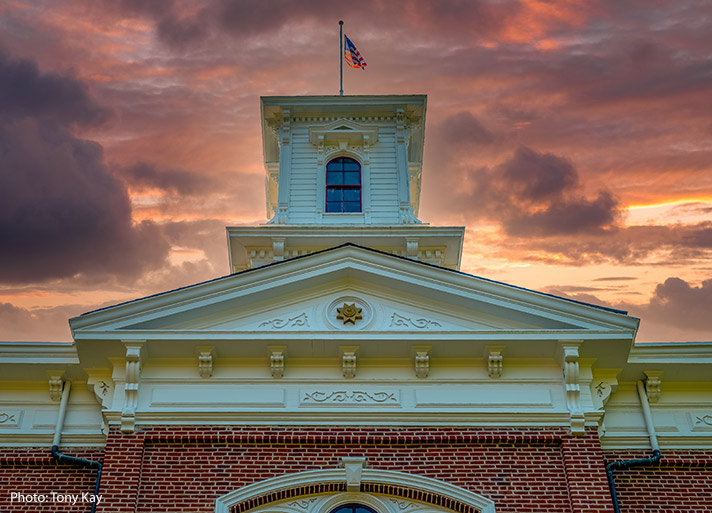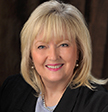A Few Minutes with the Mayor – November 2021
This month, I would like to share my column space with City Councilor, Ken Gregg, who has served on Council since 2015. Ken is known and respected as an active City Councilor. Ken has his finger on the pulse of what is happening in Jacksonville and always exhibits a careful, well-thought-out reply to any discussion or vote on Council.
In February, Council voted in favor of dividing our meetings into two categories—one regular meeting and the other a work session.
At the first work session I asked each Councilor what they thought were upcoming issues we would be facing in Jacksonville. Councilor Gregg queried returning a history museum to Jacksonville. We previously supported a museum in the historic courthouse until 2010 when it was closed. Below is a copy of a report Ken presented to Council at our September 21, 2021 Work Session on the subject.
From Councilor Gregg:
My first action was to generate a survey for the City Council so as to gather answers for some basic questions around creating a museum.
Here are the results of that survey:
Question 1: Should there be a museum in the first place? The consensus was YES.
Question 2: Where would be the best location—Old City Hall (which is now available since Council and other meetings are held in the 2nd floor of New City Hall) or elsewhere? The majority favored Old City Hall, with Councilor Thompson suggesting an interesting alternative which I’ll address later.
Question 3: Should the City participate in supporting the museum by covering the monthly utilities, insurance, alarm, DSL, etc.? The answers were equally divided between yes and no. Consultation with Staff resulted in the City offering to pay for these expenses, on the condition that the Council approves the expenditure.
Question 4: Since grants to repurpose Old City Hall are readily available, the question is what funding resources are available to pay for continuous operating costs, such as salaries, creating new exhibits, advertising, etc. These could be through an increase in the Parks and Recreation fee on the utility bills or through a re-allocation of the Lodging tax percentage. Most Councilors said any increase in the utility bill, even for reviving a museum, would be most unwelcome. The most appropriate method to fund the operating costs would be through the Lodging Tax. Other suggestions included an annual contribution from the Chamber or memberships in whatever organization would manage the museum.
Question 5: Should the City enter into a contract with SOHS whereby it would help support the museum as a satellite for exhibits and programs? The consensus was no, that Jacksonville should retain complete autonomy of its museum and contract with SOHS on an as needed basis to procure artifacts and other materials for exhibits.
Question 6: Should entrance be free or require a small charge? Answers were mixed, with the no’s pointing out that most museums, from small local to large metropolitan ones, don’t charge.
When I first presented the idea of a Jacksonville History Museum to the council, I realized I was working in the concept of one museum, one building. My thinking has changed.
I researched the many different aspects and trends in starting and maintaining a museum. Instead of thinking how this has always been done, I began to look at what museums are becoming. In other words, I approached my research with progressive rather the regressive thinking: what could a museum look like today and in the future, rather than what they have always looked like in the past?
With that in mind, I was struck by a comment in the survey from Councilor Thompson: the entire city of Jacksonville is itself a museum, a rather large one. It is, in essence, a museum without walls.
As I thought more about the museum without walls concept, and, after consulting with Carolyn Kingsnorth, the creator of Historic Jacksonville, Inc. website, I realized that the brick and mortar museum, be it in Old City Hall or elsewhere, would be redundant, challenging to maintain, and even financially risky. A modern history museum needs to be a collection of stories, more than a collection of artifacts.
A museum without walls could serve our need for a museum without the added risks and costs of a brick and mortar museum. A museum without walls would consist of three-parts: a brick and mortar location as a starting-off point for historic tours, a city-wide collection of historical places to visit, and a website to explain it all. Here is what it might look like:
Instead of being a repository for permanent and revolving exhibits of artifacts, the building could serve as a starting point for historic tours. There, visitors would be instructed on how to access the tour via printed maps and/or a GPS-directed tour. The building could contain an alcove showing a looping video (as is often seen in many museums) that shows a condensed history of Jacksonville. There could also be display cases containing permanent artifacts and storyboards or panels as well as historic photographs. This would not have to be staffed by volunteers except for weekends, for example. It could also serve as a location for occasional “living history” experiences.
Regarding the city-wide locations, there is the cemetery, the Beekman House and Bank, the historic County courthouse with the historic photographic exhibit, Old City Hall and fire station, historic homes and commercial structures, the Path Through Time sidewalk panels, the Chinatown Street Exhibit and so much more, all of which could be considered parts of a museum.
In addition to the above two elements of the museum, the third element would be a website that explains the role of the brick and mortar museum (part one) and how the city-wide museum (part two) can be accessed. There would be accounts on Facebook, Instagram, Twitter and other social media platforms explaining and promoting this unique museum.
So now that I have a better idea of what the museum might look like, my next step is to do a more detailed inquiry of what these three parts would actually look like, how much the whole project would cost to build and how the set up and recurring operating costs could all be funded.
Submitted by Councilor Ken Gregg
September 21, 2021
City Council Work Session
As you can see, Ken presented a unique, logical and affordable way to realize a new style of museum for our beloved city. I thought all of you deserved to read this report and weigh-in with your feelings and thoughts. Please share your views to Ken and me via email (mayor@jacksonvilleor.us) (councilorgregg@jacksonvilleor.us), regular mail (P.O Box 7, Jacksonville, OR, 97530, or the drop box outside New City Hall at 206th N. 5th Street, Jacksonville, OR 97530.
In the meantime, Ken will continue research on the museum project. Look for upcoming museum news in this column and at either a City Council Work Session or regular City Council meeting.

 Donna Bowen is the current Mayor of Historic Jacksonville, Oregon. Please contact Mayor Bowen with any topics you would be interested in hearing more about in this column at mayor@jacksonvilleor.us.
Donna Bowen is the current Mayor of Historic Jacksonville, Oregon. Please contact Mayor Bowen with any topics you would be interested in hearing more about in this column at mayor@jacksonvilleor.us.